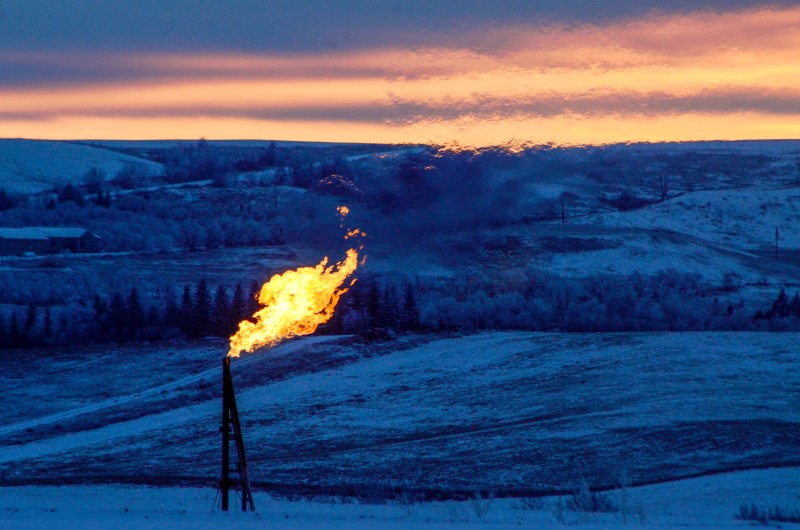Investing.com -- The much-anticipated storage injection of 100 billion cubic feet or more for the current build season in natural gas has finally materialized, sending prices of the fuel to a near one-month low on Thursday.
By 13:30 ET (17:30 GMT), the front-month gas contract on the New York Mercantile Exchange’s Henry Hub was at $2.175 per mmBtu, or metric million British thermal units — down 4% on the day. The session low of $2.138 per mmBtu was the lowest for a benchmark Henry Hub contract since the April 5 bottom of $2.031.
“This marks a fifth consecutive session of losses for natural gas futures,” analysts at Houston-based energy markets advisory Gelber & Associates observed in a note. “High levels of production, a relatively cool two-week weather outlook, and LNG plant maintenance continuing have provided the fundamental support for price declines over the past trading sessions.”
But gas prices could rise somewhat in the near term, Gelber’s analysts said.
“Cooling demand is forecasted to ramp up in the middle of June and could offer some bullish support as we approach that point,” they said. “The market will be keeping a close eye on bearish momentum and whether key support levels will be broken through.”
U.S. natural gas inventories rose by 110 billion cubic feet, or bcf, last week, the Energy Information Administration, or EIA, reported in its roundup of gas storage for the week ended May 26.
That compared with the 96-bcf injection seen in the prior week to May 19. It also contrasted against the 82-bcf injection seen during the same week a year ago and the five-year (2018-2022) average build of 101 bcf.
With the latest stockpile increase, the EIA reported that total gas in underground caverns in the United States stood at 2.446 trillion cubic feet, or tcf — up 29.5% from the year-ago level of 1.889 tcf and 16.6% higher than the five-year average of 2.097 tcf.
Just two weeks ago, Henry Hub’s benchmark gas contract hovered at 11-week highs of around $2.70, breaking out from the tight confines of mid-$2 pricing on the notion that the market may finally be turning the corner on fundamentals despite its oversupplied state.
But in recent days, it fell back to under $2.50, which has proven again to be a formidable barrier for gas bulls due to high production, subdued demand for LNG, or liquefied natural gas, and weak demand for cooling forced by unseasonably mild pre-summer weather.
